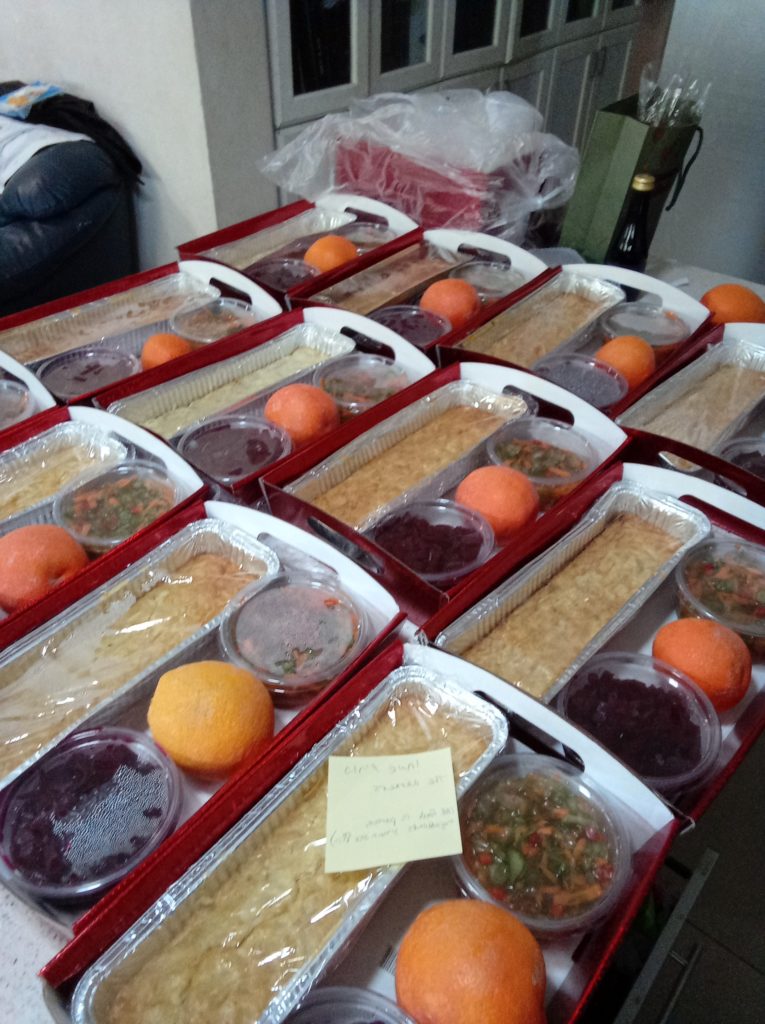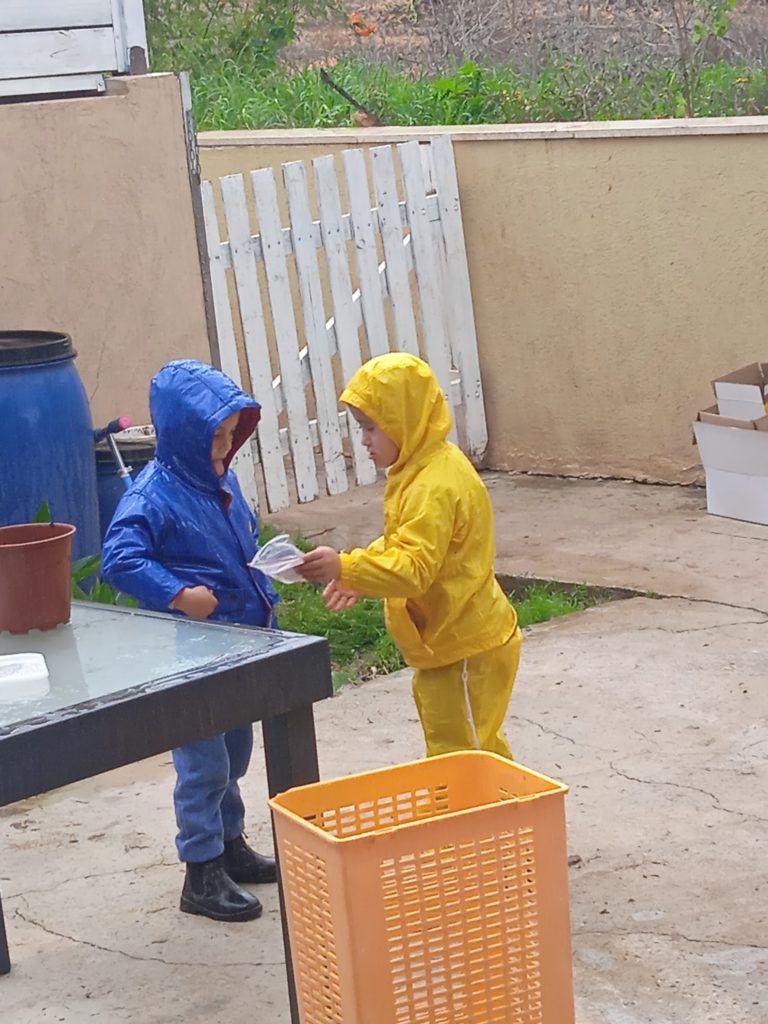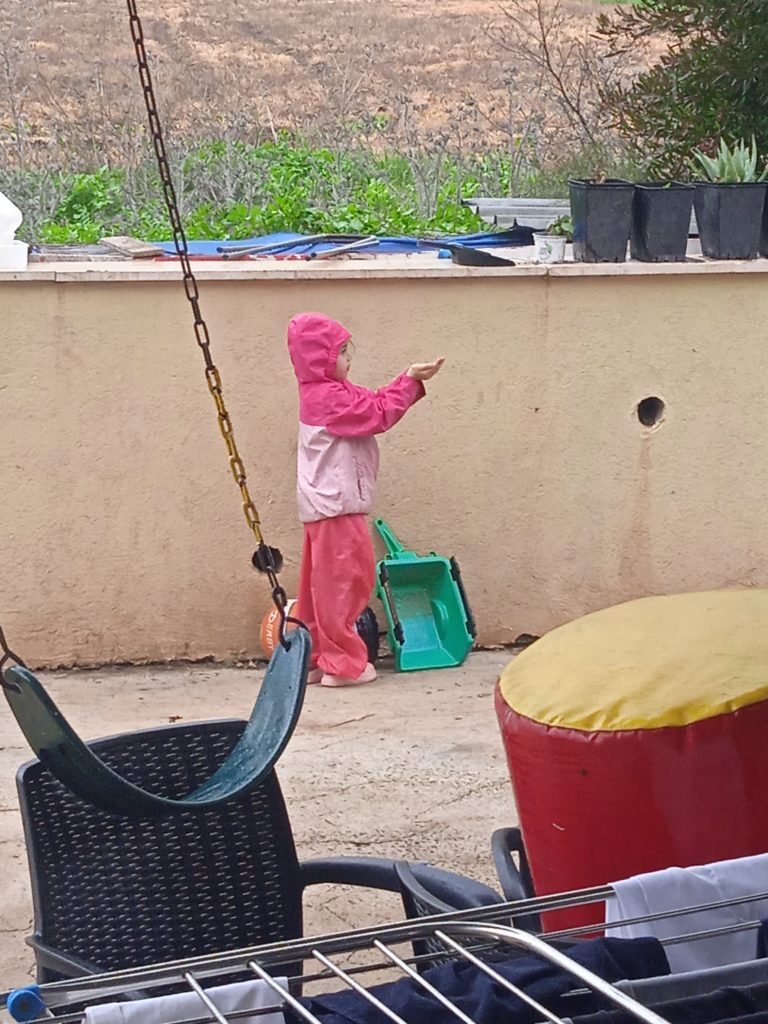On Shabbos morning, my eleven year old son with Down syndrome was walking to shul when a group of boys on the other side of the street ran over, pushed him to the ground into the bushes and kicked him.
I was on my way to shul with the younger kids when I saw him coming towards home. Since he had left to go to shul a bit earlier, I was surprised to see him and asked him what was going on. He told me he came to tell me what happened to him, that some boys hurt him.
When I get very angry, I get very quiet and don’t say a lot. I comforted him and he walked back to shul with us. As we were coming towards where the attack happened, I saw two kids glance in our direction and run away. I asked him if he saw the kids who did it and he said it was them, but of course I only saw their backs.
I wanted to find the culprits immediately, but I was with all four of the younger kids and our dog (he has anxiety about being left at home alone). I didn’t want the incident to pass without any reaction from us. I waited outside the shul for a couple of minutes until I saw other kids come out and called out to them, “Are you the ones who hurt my son?”
They asked who my son was (he had run ahead of me at that point) and when I indicated him, one of them told me it wasn’t him, that he had even given him a bag of chips. So who was it, I insisted. They gave me a name, and told me the boy’s father had come out and taken care of the issue. I doubted the way it was addressed would be adequate but thanked the boy for what he shared with me.
Before I got into shul, two girls about nine or ten were waiting for me to tell me my son had been attacked. One of them was a neighbor and she witnessed what happened. I asked them for details of what she saw. After shul her mother spoke to me. She had preceded me to shul and seen my son looking very sad on his way home. She asked him why he looked so sad, he told her and she had gone to that shul to find out who was involved. She got the same name that I had and one other. Since I heard that one boy involved was a visitor and one attends another shul, I thought they were might be giving me the names of those two boys to throw people off from the main instigators.
After the Purim morning megilla reading (Sunday), two women were waiting to speak to me. They heard about what happened to my son and wanted to offer their help. They were brainstorming what to do about this situation, since for weeks this group of boys have been sitting outside of the shul, waiting for younger and more vulnerable kids from our shul to pass when there are no adults in side. Then they run over and hurt them. They offered to buy special candies for my son so he could give them to the boys if they came to hurt him.
Generally I’m very patient even with things I disagree with but I had no tolerance for this idea, and I forcefully told them absolutely not. You don’t reward bullies for hurting you, and become a cringing pathetic creature trying to curry favor.
A couple of days passed with Purim and then Shushan Purim, and the next morning (Tuesday) I got busy. I did some research and learned where these boys went to school. After a two hour meeting at dd6’s kindergarten, I went to the boys’ school to speak with the principal. He had just left, so while I waited for him to return I called the representative at the local council who is responsible for addressing communal violence.
She told me she has already heard about the ongoing attacks and is working on finding a solution that addresses the roots, not just a superficial response, and that will take time. Great, I told her, I agree that’s a good thing. And while you’re working on that deeper response, there needs to be police supervision of this area. She said she would speak to the local police officer about it.
I thanked her, got off the phone and then called back to get the officer’s number to speak to him myself.
Then I went back to the school and found out the principal had returned. Since they don’t allow women on the premises, I waited outside the front gate while they called him and told him I was there to speak to him. Almost immediately, an obnoxious boy ran over and demanded to know who I was and what I was doing there. What is it with the kids in this community that so many of them are so obnoxious?, I wondered to myself. Then another boy ran over and asked if I was ds’s mother, and if I was there because boys hurt him. Yes, I nodded. The second boy said to the first, your brother was one of the ones that hurt him. Very interesting, I thought, just as the principal arrived.
There’s no question that within a short time all of the kids at the boys’ school knew I was there because of what happened to my son; I could almost feel the news spreading.
I told the principal what happened and that I needed his help to address what had happened with his students. He tsked tsked in sympathy, and said the shul isn’t his jurisdiction. I told him I understand that but that there needs to be a response so these boys know what they’re doing isn’t acceptable and it’s not being ignored. He told me he’s willing to do whatever he can to help me, and asked if I know who’s involved. I told him the two boys at the gate knew what happened, and gave him the name of another boy who was present and can tell him who everyone was. Since these boys are from a different shul, none of the kids attacked knew who they were, and until now I don’t think anyone has had names to work with. I didn’t give the two names I was given because I didn’t want to throw everything off by mentioning them and being told they weren’t his students, since I knew the majority of the kids involved are from that school.
He right away began investigating, while the security guard sitting there mentioned he knows my son. He told me his son is the driver of my son’s school van and likes my son a lot, and mentioned how nice it was that I gave him mishloach manos. It was a nice and unexpected connection, and we chatted for a few minutes about other things. Then he told me it was a shame I don’t have names because it would help if they know who is involved. I told him I have a couple of names, and told him the last name of one boy.
He repeated the name and exclaimed, that’s the boy who started talking to you when you got here! He asked for the other name, and when I said it, he made a face like it made sense, then told me these are both very problematic kids. He called over the principal so I could give him the names.
I was glad to know I had the names of the actual ringleaders. From there, I went home and found my husband talking to a visitor who was using our printer. I mentioned where I had come back from, and the visitor told me his son was attacked on Purim morning by this same group, and then later in the day the kids hid close to his home and three brothers attacked his son when he went out by himself. He knew the first names of two brothers involved, so now I had some more detail.
Since I had another school meeting, this one for ds6, my husband went out to meet my son’s school van when it arrived. He spoke to the driver and the man who accompanies the kids, who both go to that shul. He told them what happened to our son and what boys were involved, and asked what could be done. They said these children are from the negative part of their community and it was clear from the response that they create a lot of havoc.
Meanwhile, from my meeting I went to pick up dd6 from kindergarten, which is located on a larger campus where the daughter of that shul’s rave runs the afternoon program. She’s the mother of a large family and I’ve met her casually a couple of times. As with the principal, I wanted to speak to her in person because a personal connection is better created in person, rather than making phone calls or sending emails. I waited for her to be available, then told her about what happened. More tsk tsking in sympathy.
I appreciate the sympathy, but what I want action is taken to prevent any other children from being hurt, and I told her so. I told her this isn’t about my specific child, but about all the children from our shul. She told me that her father has taken care of every incident he’s heard about. While I appreciate that, I suggested that more needs to be done if he’s addressed it and it continues to happen. She said these children come to shul without their parents and don’t have anyone supervising them. I proposed that the adults in their shul set up some kind of supervision so that this doesn’t happen again. She didn’t think that was a good idea, but said she would call her father right away to talk to him about this.
That night I told my fourteen and sixteen year olds that I had been working on addressing what happened to my eleven year old on Shabbos. They asked me what I was talking about. I was taken aback that seemingly everyone in the community knows my son was attacked – everyone except my boys. I didn’t talk about it on Shabbos, because as I said, my focus was on thinking about what to do, not talking. They were furious.
The next morning I spoke with my twenty five year old son who will be coming for Shabbos. My seventeen year old will also be coming home for Shabbos (he comes on alternate weeks). I told him I’m not relying on the city council, the principal or the shul rav to keep our son safe.
I put forward the idea that they go to that shul together with my fourteen and sixteen year olds. Maybe my husband will go, maybe my eleven year old will go but definitely the four of them. We have to work out the specifics. My boys aren’t massive but they’re not small; two are over six feet and while the others aren’t as tall, only 5’9 and 5’10, they all have a good presence. I’ve raised them all not to use physical force to solve problems even though every one of them is very capable of physically defending himself. I want the message to get out that my eleven year old has big brothers looking out for him and if they mess with him again, his brothers are going to respond. My older son agreed that’s a good approach. If I’m right in my assessment of these kids, they don’t respect nice words – they respect might.
I received a text message from the city council representative saying the police officer was in touch with one of their community leader and warned them that they needed to address the issue so it doesn’t happen again, or they would have to take steps to stop it. I was dissatisfied with that response, since after all my conversations, I felt fairly certain that the community members don’t know how to deal with these kids and that the parents aren’t in the picture as a positive force. I hope that I’m wrong about that and am being too pessimistic.
The next day, the representative called me and we spoke for another twenty minutes. I was very forceful in my insistence that this needs to be addressed and we have to be realistic that a verbal warning is unlikely to be sufficient. I gave her the names of the ringleaders and told her it’s important to stop what’s going on because if we don’t, it’s going to escalate. I explained that these kids will unquestionably become juvenile delinquents and the kids themselves and both communities involved will benefit from them a strong response right now.
She asked for details of the ages of kids attacked and the times it’s happening. I told her, and also said there needs to be a police presence for those two hours of the morning. She said they don’t have the manpower. I warned her that while everyone is our community is doing their best to maintain peace, there’s a lot of anger from other parents who feel that their children aren’t being protected and the city council is turning a blind eye. While I’m the one making the calls, this isn’t about just me and my son. Again, when I speak with people I want to create allies and that doesn’t happen by attacking people, but I spoke to her as strongly as possible and detailed things that have happened in the past, the challenges involved in this specific situation, and how critical it was that they take this very seriously.
I also made some very specific suggestions as to how the police officer deal with the children involved and their parents. I don’t know if this will be conveyed. I would like to speak to him in person as well, but if I have any sort of conversation with him, that won’t happen until next week.
Before this call, I was planning to speak to the mayor in person that day to request the police presence begin immediately this Shabbos. But my seven year old was home with me, I had been up since 4 in the morning, and I was tired by the time the representative and I finished speaking at around noon. I didn’t know what the mayor’s hours were and didn’t have the energy to go running around with my son in tow to try to catch him. I decided to wait a little longer and give everyone involved the time to work on this situation.
While I’m taking the action that I can, I know that it’s not my efforts that will create change and we need heavenly assistance to succeed. I’m appreciative of all prayers on our behalf that this violence against children is resolved quickly.
Avivah


